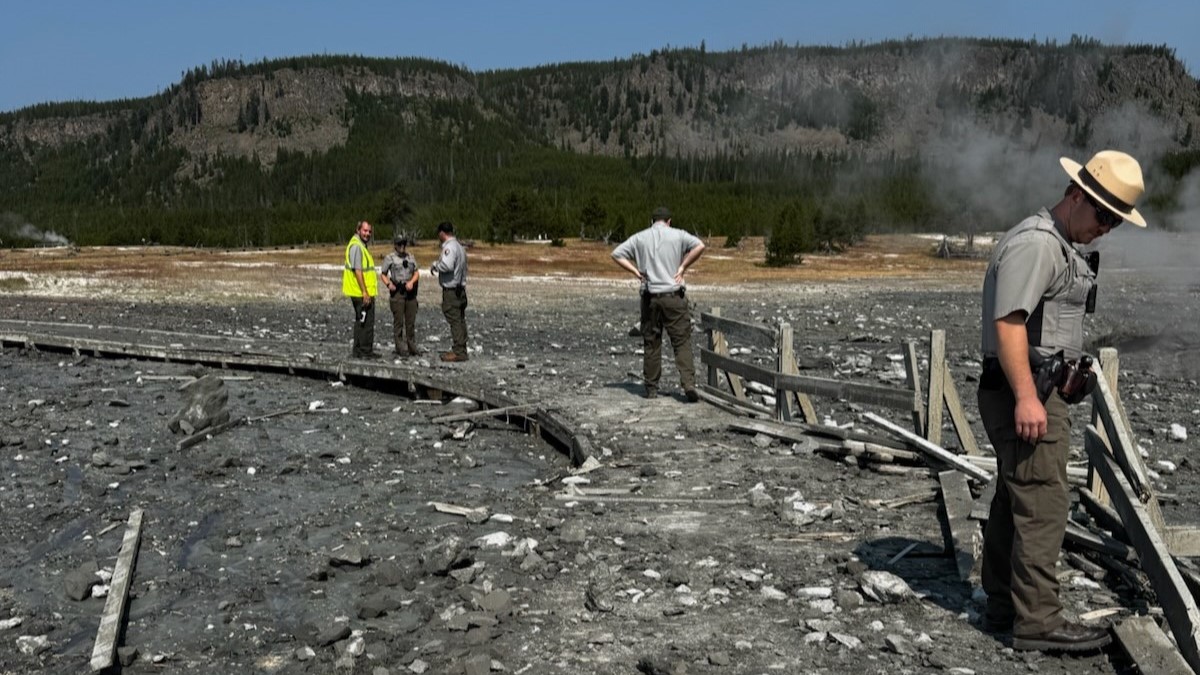
A surprise hydrothermal eruption at Yellowstone National Park coughed up huge clouds of steam and dust on Tuesday (July 23), according to the National Park Service (NPS), prompting visitors to flee and staff to close the area.
Videos posted online show dozens of people along a boardwalk running away from a 100-foot-tall (30 meters) plume of debris in Yellowstone's Biscuit Basin, located just north of the Old Faithful geyser. Biscuit Basin is known for its collection of colorful geysers and thermal pools, including Sapphire Pool, which is close to the eruption site.
No one was injured by the eruption, which took place at 10:19 a.m. Mountain Time (12:19 p.m. EDT), but the nearby boardwalk "will need a few repairs," representatives of the U.S. Geological Survey (USGS) wrote in a post on the social platform X. Pictures taken after the eruption showed rocky debris and silt strewn across the boards and guardrails.
"What we saw today was spectacular and definitely hazardous," Michael Poland, a research physicist and scientist-in-charge of the Yellowstone Volcano Observatory, told the Associated Press. The eruption, which was "relatively small" compared with past eruptions in Yellowstone, was nevertheless "a very good reminder of an underappreciated hazard," Poland said.
Related: Yellowstone Lake's weird resistance to climate change could be about to crack
Clogs in the natural plumbing system underlying Yellowstone may have triggered the eruption, Poland said. Blockages may have fueled a buildup of heat and pressure in a passageway beneath Biscuit Basin, which in turn may have flashed water into steam, causing a sudden expansion in volume that sparked an explosion, he said.
"We saw more steam coming up and within seconds it became this huge thing," Vlada March, a real estate agent from California who was visiting Yellowstone with her family at the time, told the AP. "It just exploded and became like a black cloud that covered the sun."
An unusually large eruption of one of Yellowstone’s geysers occurred at Biscuit Basin moments ago. pic.twitter.com/b8Ya4iW1H3July 23, 2024
The eruption doesn't mean volcanic activity beneath Yellowstone is ramping up, according to the NPS. "Today's explosion does not reflect a change in the volcanic system, which remains at normal background levels of activity," representatives wrote.
The explosion is small compared with past hydrothermal events at Yellowstone, including a series of eruptions 13,800 years ago in the Mary Bay area on the northeastern side of Yellowstone Lake. Those eruptions blew out a crater measuring 1.5 miles (2.4 kilometers) across — the largest known from a hydrothermal explosion on Earth, Poland said.
Yellowstone staff and USGS geologists are monitoring the area and will reopen it to visitors once it is safe to do so, according to the NPS.







